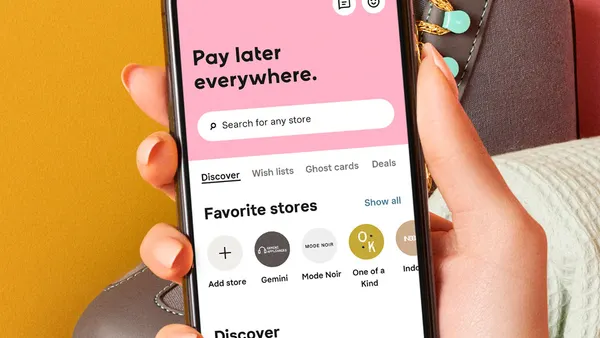Brief:
- The percentage of online consumers who will use their smartphones to shop will grow to 16% this year from 12% in 2017, according to PwC's annual survey of about 2,000 consumers. Even more encouraging for mobile marketers, consumers will boost their holiday spending 5% this year to $1,250 on gifts ($693), travel ($361) and entertainment ($196), the survey found.
- Social media companies like Instagram, Pinterest and Snapchat are set to benefit from the 39% of all shoppers who will use "buy" buttons on their smartphones and 25% who click on shoppable photos. Mobile shopping will be particularly popular among Generation Z, with half of the group who plan to complete all their shopping online using a smartphones, per PwC.
- High-earning millennials (ages 23-36 making $70,000 or more a year) will be the biggest users of mobile payments, with 50% using their smartphones for in-store payments, compared to 24% of all consumers. Almost half (41%) of this group will use a wearable device like a smartwatch for an in-store payment, compared with 16% of the general population, the survey found.
Insight:
PwC's survey results indicate that brands and retailers need to be prepared for the growing number of consumers who will shop on their phones or checkout at stores using a mobile device. Cross-channel strategies will be key with 75% surveyed saying they'll shop both online and in stores, spending more on average ($1,379) than those who shop only online ($1,075) or only in stores ($742).
Social media apps like Instagram, Pinterest and Snapchat have been gearing up their mobile commerce capabilities in the past year. All three have added shoppable ads to help brands make direct sales. Instagram rolled out this feature more broadly in September, with easy buying straight from posts by companies and social influencers. Snapchat also started offering self-serve shoppable ads to all advertisers after testing the format in June. The image-messaging app also added a visual search feature that drives shoppers to Amazon to make a purchase. Pinterest introduced its shopping ads in March.
The shift in shopping habits will benefit the likes of Instagram, Snapchat and YouTube, which offer dynamic platforms for social influencers, who have the power to affect the purchase decisions of millions of people. Generation Z is more likely than older generations to seek the opinions of social influencers, as 55% of the age group follows influencers with similar interests, compared to 41% for the broader population, per PwC. Influencer marketing is becoming more popular among national advertisers that seek to cut through ad clutter to reach young, ad-fatigued adults who have shifted their viewing to online and mobile platforms. Three-fourths of advertisers currently run some kind of influencer campaign, and about half (43%) plan to raise spending on it in the next 12 months, according to an April survey from the Association of National Advertisers.














